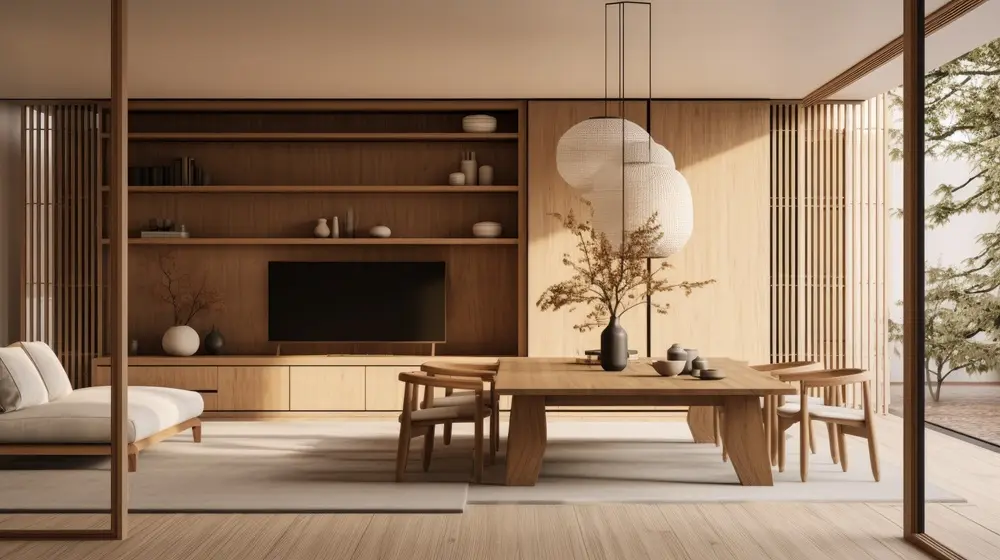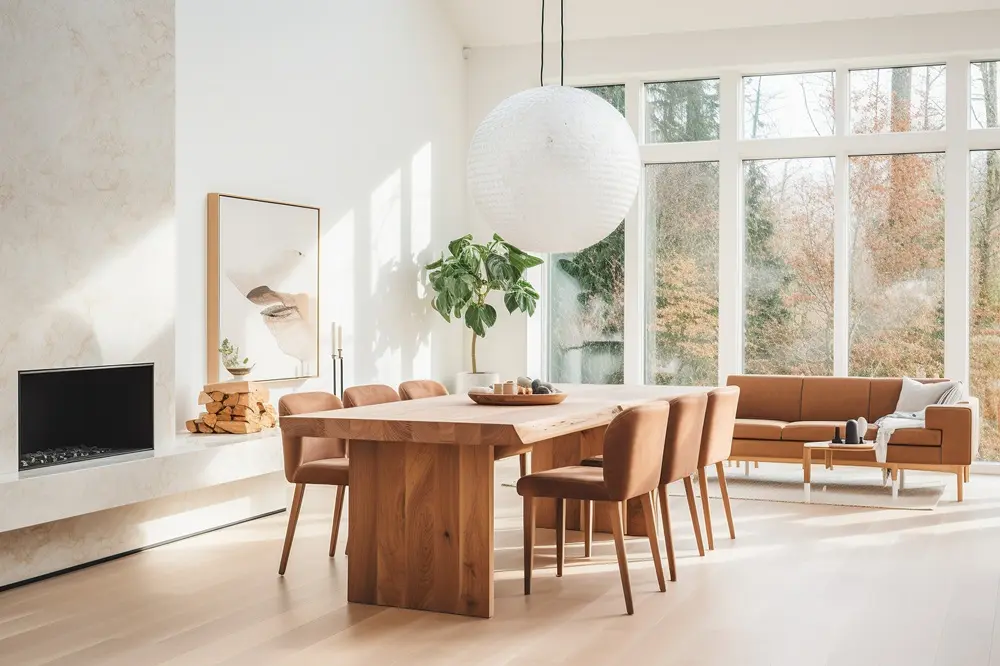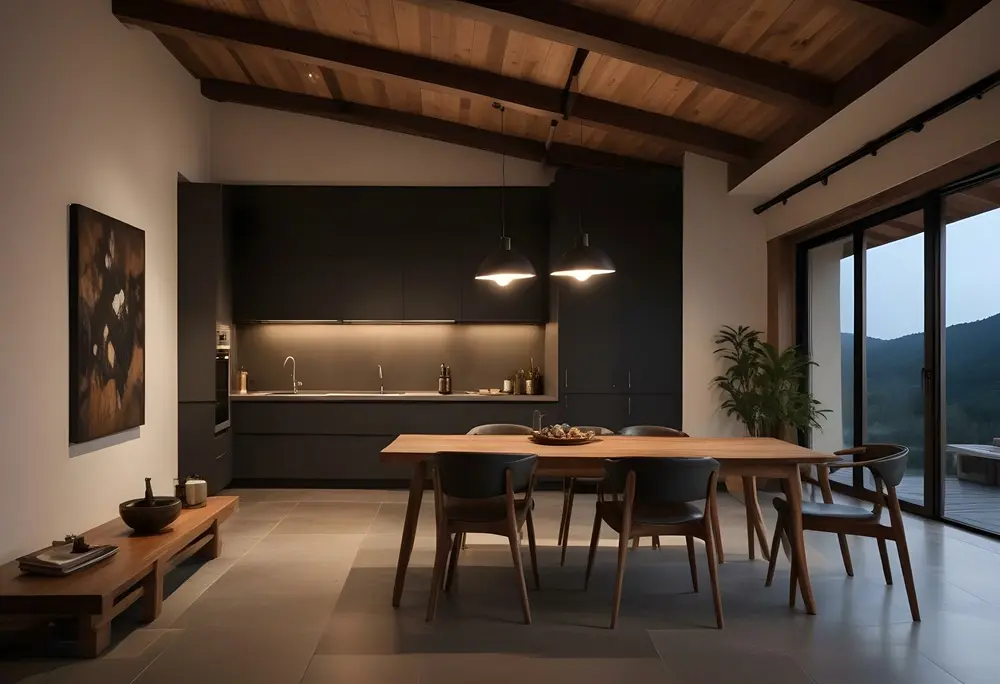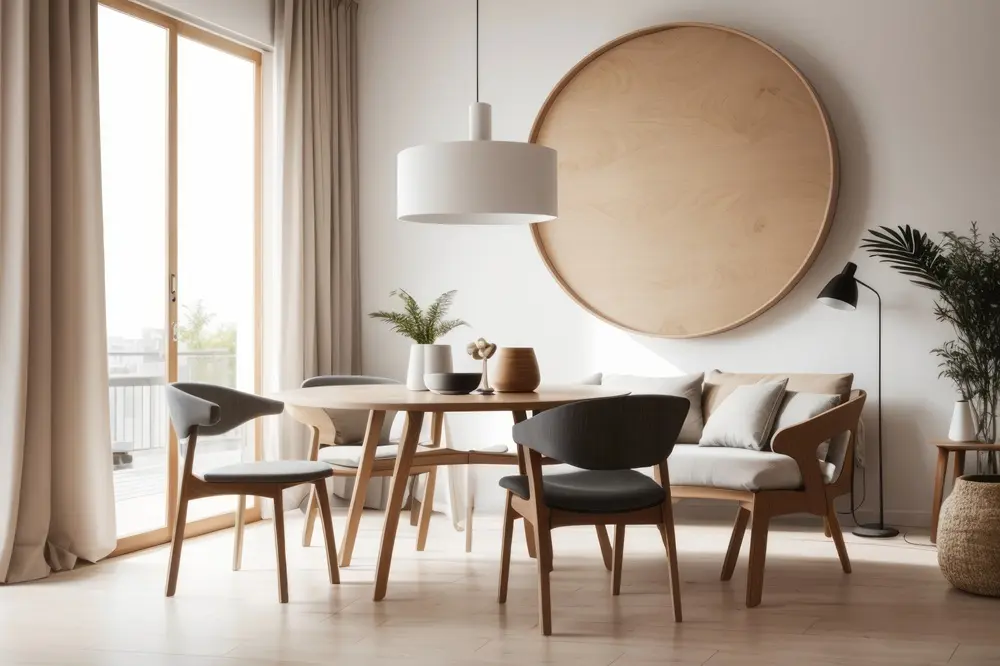Balancing the Living Room and Dining Space in Japandi Design

Japandi design is a stylish blend of simplicity and comfort, a marriage of Japanese aesthetics and Scandinavian design. It creates serene, functional spaces through clean lines, natural materials, and a thoughtful use of color and decoration. The key to mastering Japandi design in a combined living and dining space is to create a harmonious flow, where the two areas complement each other beautifully while serving their distinct purposes. Let's explore how to achieve this balance in detail.
1. Keep an Open Layout

Japandi design celebrates open spaces that flow naturally. Rather than dividing the living and dining areas, keep them connected to maintain an open feel. Selecting furniture with simple, low designs helps avoid abrupt visual separations between the spaces. Sofas with legs that elevate them slightly off the ground can maintain an airy, unbroken flow and emphasize the Japandi atmosphere.
When planning the layout, choose one that allows easy movement between the two areas, with clear walkways and appropriately spaced furniture. Ensure the space remains uncluttered and functional.
2. Unify Color Palette

A natural, earthy color palette is essential to Japandi design. By using consistent, neutral tones such as soft whites, warm grays, and beige throughout both spaces, you establish a seamless connection between the living and dining areas. This continuity in color helps create a unified look. If you want to add more depth and visual interest, incorporate subtle accent colors like black or deep earth tones. In the picture above, the brown color matches the dining chairs, sofas, and wall painting, reinforcing the sense of cohesion.
3. Match Natural Materials

Consistency in materials across both spaces helps achieve a unified, balanced look. Use similar materials, such as light wood, rattan, or linen, in both the living and dining areas. Natural wooden finishes, in particular, are easy to integrate into both areas to create a calm, elegant home. A dining table with natural wooden finishes will give an instant Japandi vibe.
When the materials are consistent, transitioning between the living and dining spaces feels smooth. This reinforces the connection between the two areas, making the home feel more cohesive and peaceful.
4. Minimal Accessories with Shared Themes

The décor should be carefully selected and thoughtfully restricted. A key strategy is to use shared themes throughout your décor. For example, displaying similar artwork or using matching vases can visually connect the areas. Additionally, incorporating nature indoors with simple, elegant plants—such as bamboo, bonsai, or potted greenery—can enhance the flow and balance between the two spaces. Using similar types of plants in both areas helps to unify the overall design.
5. Bring in Natural Light and Use Layered Lighting

Maximizing natural light is important in Japandi design. Keep window treatments light and minimal to allow sunlight to flow freely between the living and dining areas. Natural light enhances the sense of openness.
In addition to natural light, layer your lighting to create a calming, warm ambiance. Combine overhead lighting with floor and table lamps to ensure each space is well-lit without being overly bright. Consider pendant lights with natural textures over the dining table and soft lighting in the living area for a cohesive.
6. Balance Different Colors and Textures

Though Japandi design is rooted in minimalism, textures and layering are crucial for adding warmth and depth to the space. Soft, natural textures like linen, wool, and cotton bring coziness to the minimalist setting. Incorporating textured cushions, throws, and rugs into both the living and dining areas creates a cozy, inviting environment. As long as the accent colors are not overwhelming, incorporating different shades from the main color palette can add visual interest.
By balancing hard and soft elements such as pairing a sleek wooden table with the soft textiles of chair, you avoid a cold atmosphere and instead create a warm, welcoming space.
Conclusion
Achieving balance between the living room and dining space in Japandi design is about maintaining consistent aesthetics and a seamless flow. The goal of following the tips above is to create a serene and functional environment that feels unified while still serving the distinct purposes of each space.
Click here to explore more about the essence of Japandi décor.

